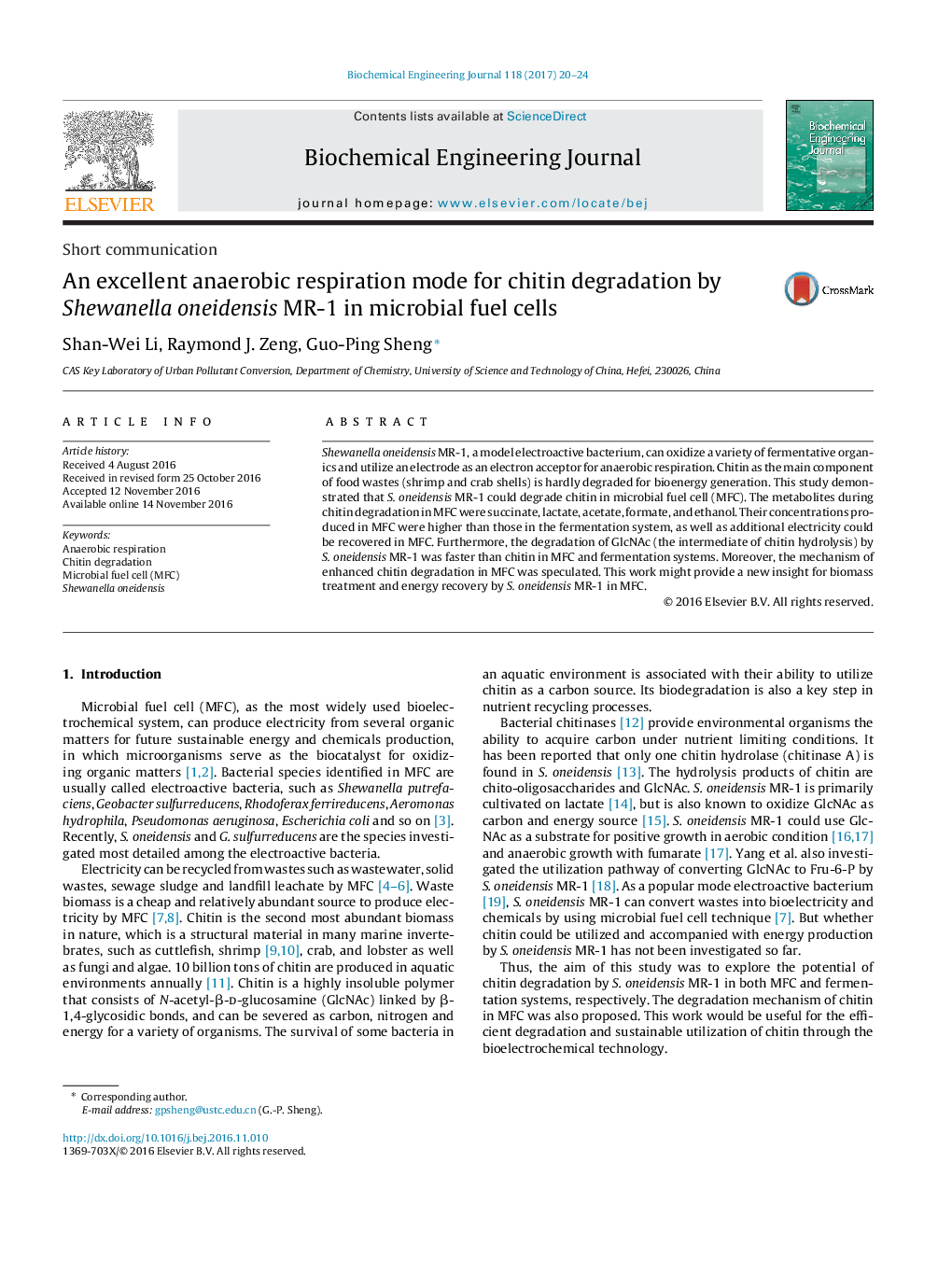| Article ID | Journal | Published Year | Pages | File Type |
|---|---|---|---|---|
| 4752182 | Biochemical Engineering Journal | 2017 | 5 Pages |
â¢S. oneidensis MR-1 can degrade chitin and GlcNAc in both MFC and fermentation systems.â¢Chitin degradation in MFC was more efficient compared with that in the fermentation system.â¢The enhanced mechanism of chitin degradation by S. oneidensis MR-1 in MFC was proposed.
Shewanella oneidensis MR-1, a model electroactive bacterium, can oxidize a variety of fermentative organics and utilize an electrode as an electron acceptor for anaerobic respiration. Chitin as the main component of food wastes (shrimp and crab shells) is hardly degraded for bioenergy generation. This study demonstrated that S. oneidensis MR-1 could degrade chitin in microbial fuel cell (MFC). The metabolites during chitin degradation in MFC were succinate, lactate, acetate, formate, and ethanol. Their concentrations produced in MFC were higher than those in the fermentation system, as well as additional electricity could be recovered in MFC. Furthermore, the degradation of GlcNAc (the intermediate of chitin hydrolysis) by S. oneidensis MR-1 was faster than chitin in MFC and fermentation systems. Moreover, the mechanism of enhanced chitin degradation in MFC was speculated. This work might provide a new insight for biomass treatment and energy recovery by S. oneidensis MR-1 in MFC.
